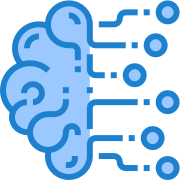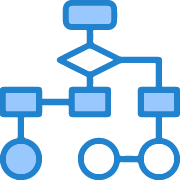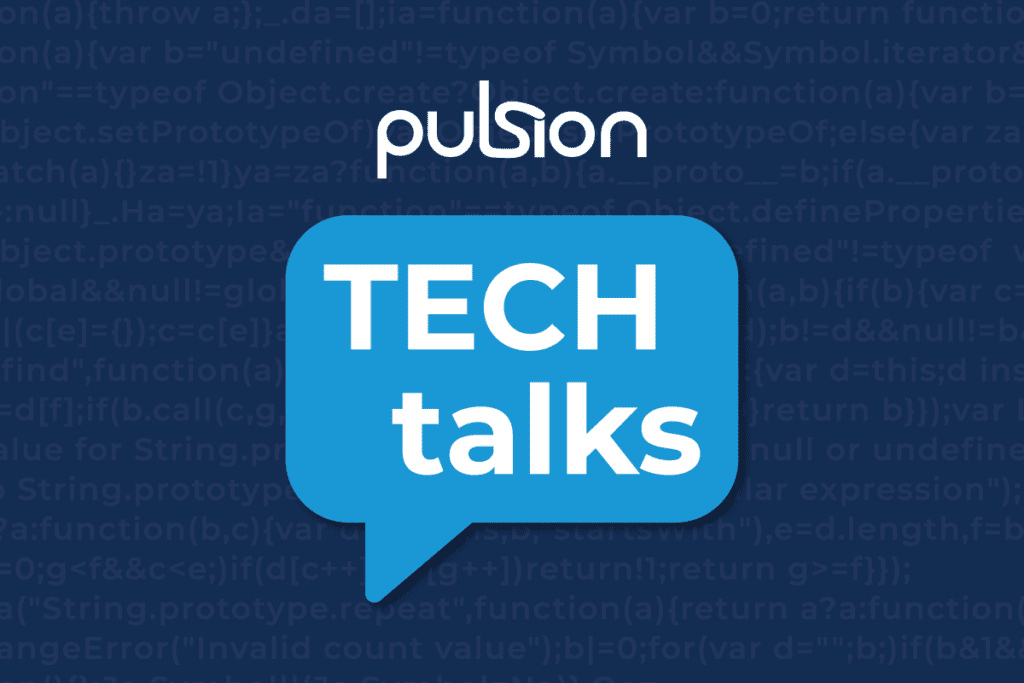



Future-Proof with Machine Learning Apps
The worldwide market for machine learning applications is forecasted to be worth over $200bn within 2024, and to exceed $500bn by the end of the decade. These forecasts are driven by massive advancements in areas such as healthcare machine learning and manufacturing machine learning.
This is a clear indication that developing a machine learning app today is a future-proof investment, if carried out correctly (Utilising mobile devices etc).
Machine Learning app development is potentially to 2024 what mobile app development was to the late 2000s, and so it is vital that your business at least investigates how machine learning application development could apply to you.
What is a Machine Learning App?
Machine learning app development can take on many forms. From integrating machine learning algorithms in to your mobile apps, to utilising a machine learning algorithm to create intelligent HR chatbots for employees within your company to use, the opportunities are becoming endless.
However, the truth is that the term covers any application that utilises at least one machine learning algorithm to aid it’s functionality, and as it appears that machine learning technology is here to stay and is only improving, we believe it is vital for companies to consider how they and their application(s) will be affected.
Whether it be mobile app development, web app development, or something completely different, consumers are increasingly expecting a much higher user experience, and this is largely driven by the incorporation of artificial intelligence and machine learning.
Building Machine Learning Applications
In 2024, there are multiple ways and reasons to build a machine learning application. Whether it be to use accurate data on your customers to predict user behaviour, or utilising large-scale data mining to automate forex transactions, the possibilities are nearly endless.
However, a manufacturing machine learning application, may be very different to integrating some machine learning in to your commercial mobile app development project for use on a wide variety of mobile devices.
It is important to know the different ways that machine learning technology may affect the process of building a machine learning app.
Incorporation of Machine Learning in to an Existing App
Machine learning app development can often involve incorporating incorporating ml algorithms in to an existing application. This is fundamentally to increase the value provided to the end user, which can be achieved in a number of ways.
Incorporating machine learning can significantly enhance its capabilities, offering personalised experiences and smarter decision-making. This integration typically involves identifying areas within the app where ML can add value, such as recommendation systems, predictive analytics, or automated customer support.
The process begins with collecting and preparing relevant data, a crucial step for training effective ML models. Once a model is developed and trained, it’s integrated into the application’s architecture, often through APIs.
This requires careful planning to ensure seamless performance and minimal disruption. Additionally, continuous monitoring and updating of the ML model are essential to maintain its accuracy and relevance, adapting to new data and evolving user needs.
The integration of ML transforms applications into more intelligent, responsive, and user-centric tools, unlocking new possibilities and efficiencies.
Creating a Machine Learning App From Scratch
Machine learning app development from scratch involves a strategic blend of software development and data science expertise. The process starts with defining the application’s objectives and understanding how ML can enhance its functionality.
Key steps include data collection and pre-processing to prepare a high-quality dataset for training the ML model. This model is then selected and trained to perform specific tasks, such as image recognition, natural language processing, or predictive analytics, based on the application’s needs.
The development phase involves integrating the trained ML model into the application’s architecture. This integration is often achieved through APIs or micro-services, allowing the application to interact with the ML model in real-time or batch processing modes.
Attention to user experience is crucial, as the application should present ML-driven insights in an accessible and actionable manner. Rigorous testing is essential to ensure the model’s predictions are accurate and reliable within the app’s context.
Post-deployment, continuous monitoring and updating of the ML model are necessary to maintain its performance, especially as new data becomes available. This requires setting up a system for model retraining and deployment without disrupting the application’s functionality.
Building an ML-powered application is an iterative process, focusing on both the technical aspects of ML and the practical considerations of software development to create innovative, efficient, and user-friendly applications.
Our AI and Machine Learning Development Services
Elevate Your Business with AI
In the dynamic landscape of digital innovation, our Machine Learning App Development Services stand out by offering bespoke solutions that harness the power of AI and data science to transform your business operations and customer experiences. We specialise in developing cutting-edge machine learning applications tailored to meet the unique needs of your business, ensuring you stay ahead in the competitive market.
Our team of expert developers and data scientists collaborates closely with your business to understand your challenges and objectives. By leveraging advanced AI and machine learning technologies, we create mobile and web applications that not only solve complex problems but also unlock new opportunities for business growth and efficiency. Whether you’re looking to enhance customer engagement, streamline operations, or gain deeper insights into your data, our services are designed to deliver tangible results.
Our AI and Machine Learning Development Services Include
Embrace the future with our Machine Learning App Development Services and unlock the full potential of AI for your business. Let us help you transform your ideas into innovative applications that drive growth, efficiency, and competitive advantage.
Types of Machine Learning
There are many different sub-fields within machine learning, and when you are embarking on your machine learning application development journey, it is vitally important to understand what these are, at least from a high level. Data science

Supervised Learning
This is a type of machine learning where a model is trained on a set of labelled data points. In this approach, the data includes input-output pairs, where the desired output is already known. The model learns to map input data to output data based on a subset of this data (referred to as the training set), essentially learning from examples.
The process involves two key stages: training and validation. During training, the algorithm uses the training dataset to learn the relationship between input and output data points. The validation stage tests the model’s accuracy using a separate subset of the data (referred to as the validation set),which is unseen during training.
This method is widely used for applications such as image and speech recognition, medical diagnosis, and financial forecasting. The model’s performance heavily depends on the quality and quantity of the training data. A well-trained model can make predictions or decisions when presented with new, unseen data.
One of the main challenges in supervised machine learning is overfitting, where the model becomes too tailored to the training dataset and generalises poorly to new data. Techniques like cross-validation, regularisation, and choosing the right model complexity are essential to mitigate this issue.
There many supervised machine learning algorithms that are used in practice:
- Linear Regression
- Decision Trees
- Support Vector Machines
- Neural Networks (DNN, GAN, LLM, etc.)
Unsupervised Machine Learning
Unsupervised learning refers to a family of machine learning algorithms where the model learns from a dataset without any explicit instructions on what to do with it. Unlike in a supervised approach, where the training dataset includes labelled examples, unsupervised learning involves working with data that has no labels or predefined categories.
The primary goal of unsupervised learning is to uncover hidden patterns, groupings, or correlations within the data. It’s particularly useful for exploratory data analysis, identifying underlying structures, and making sense of complex data sets.
Common methods in unsupervised learning include clustering and dimensionality reduction. Clustering algorithms, like K-means or hierarchical clustering, group data into clusters based on similarity, without prior knowledge of group identities. This is useful in market segmentation, social network analysis, or organising large databases.
Dimensionality reduction techniques, like Principal Component Analysis (PCA), reduce the number of variables in the data, making it easier to visualise and analyse, while preserving as much variability as possible.
Unsupervised learning faces challenges such as determining the right number of clusters or ensuring that reduced dimensions maintain critical information. It’s a powerful tool in the data scientist’s arsenal for uncovering insights from data where the answers are not immediately obvious.

Reinforcement Machine Learning
Reinforcement Learning is a sub-field of machine learning, which comes under neither the category of supervised or unsupervised learning, but instead is itself a third main category of machine learning. RL as a field has seen unprecedented and un-rivalled success in many classical machine learning problems that were incredibly challenging to solve using previous methods.
There is some fundamental terminology that is necessary in order to understand RL. In RL, it is the case that an agent performs an action in an environment. The agent also has a state, and may receive a reward for its action. The agent also may observe the consequences of its action. The RL process
can be described mathematically as a Markov Reward Process.
Deep Learning
This is a subset of machine learning where artificial neural networks, algorithms inspired by the human brain, learn from large amounts of data. DL models automatically extract and learn features from raw data, eliminating the need for manual feature extraction. These models are called “deep” because they have various layers of neural networks, allowing them to learn complex patterns in large datasets.
DL has significantly advanced fields such as computer vision, natural language processing, and audio recognition. It’s the technology behind driverless cars, enabling them to recognize a stop sign, or voice assistants to understand human speech.
One of the most popular types of neural networks used in deep learning is Convolutional Neural Networks (CNNs), especially effective in image and video recognition tasks.
The key advantage of DL is its ability to process and make decisions from unstructured data like images, text, or sound. However, deep learning models require substantial computing power and large datasets to perform effectively, which can be a limitation for some applications.
Despite this, deep learning continues to be at the forefront of artificial intelligence research, driving innovations across various industries.
Machine Learning Model Development
Machine learning app development will involve the development of at least one model, and therefore it is vital that the standard development process is understood. The following outlines the steps involved in this process.
Data Collection
The data collection phase is a critical stage in the development of machine learning models. It involves gathering the raw data that will be used to train and validate the model. The quality and relevance of this data directly impact the performance and accuracy of the machine learning system.
In this phase, identifying the right type and quantity of data is crucial. Data can be structured (like databases) or unstructured (like images or text). The choice depends on the problem being solved. For example, image recognition tasks require large sets of labelled images, while natural language processing tasks need diverse text data.
The data must be representative of the real-world scenario the model will encounter, ensuring it can generalize well to new, unseen data. This requires a comprehensive and diverse dataset that captures the various nuances and edge cases the model might face.
Data collection can also involve ethical and legal considerations, especially when dealing with personal or sensitive information. Compliance with data protection laws and ensuring data privacy is vital. It is also of vital importance that the means by which the data sets have been obtained (data mining, web scraping, etc.) follow ethical best practices.
Data Preparation
Once collected, the data is pre-processed to transform and clean it, making it suitable for feeding into machine learning algorithms. This includes dealing with missing values, normalizing data, feature extraction, and potentially augmenting the data to create a more robust dataset.
The pre-processing stage typically includes several key tasks. Initially, it involves cleaning the data, which means removing irrelevant data, correcting errors, and dealing with missing values. This is important to avoid introducing bias or inaccuracies into the model.
Next, data is often normalised or standardised to bring all features to a similar scale. This prevents features with larger scales from dominating the model’s learning process.
Another essential step is feature extraction and selection. This involves identifying the most relevant features to the problem at hand and transforming them into a format that can be utilised by the algorithms.
Categorical data often require encoding to convert them into a numerical format, as most machine learning algorithms work better with numerical inputs.
Data augmentation, where data is artificially expanded by creating modified versions of existing data, is also a common practice, particularly in fields like image and speech recognition.
Pre-processing is a critical phase in machine learning that ensures the data is primed for effective learning and model building, directly impacting the success of the project.
Model Training
The model training phase is a central part of machine learning (ML) development, where the prepared data is used to teach the model to make predictions or decisions. During this phase, the machine learning algorithm iteratively learns from the data, adjusting its parameters to minimise errors.
This process starts with dividing the data into training and validation sets. The training set is used to expose the model to the data and its inherent patterns, while the validation set is used to evaluate the model’s performance and generalisability to new, unseen data.
A key aspect of model training is choosing the right algorithm. This depends on the type of problem being solved (classification, regression, clustering, etc.) and the nature of the data. Common algorithms include decision trees, neural networks, and support vector machines.
The model is trained by optimising its parameters to reduce the difference between its predictions and actual outcomes. This is often achieved through techniques like gradient descent.
Overfitting, where the model learns the training dataset too well, including its noise and outliers, is a critical challenge. Techniques like regularisation, cross-validation, and early stopping are employed to prevent this.
Ultimately, the goal of the model training phase is to create a model that not only performs well on the training dataset but can also generalise effectively to new, unseen data.
Model Validation
The model validation phase in machine learning development is critical for evaluating the performance and generalisability of the trained model. This phase involves using a separate dataset, known as the validation set, which was not part of the training process, to test the model’s predictions.
During validation, various metrics are employed to assess the model’s accuracy, precision, recall, and F1 score, among others, depending on the nature of the problem (classification, regression, etc.). This helps in understanding how well the model is performing and whether it’s making accurate predictions.
An essential aspect of validation is to check for overfitting – where the model performs exceptionally well on the training data but poorly on unseen data. Techniques like cross-validation, where the historical data is split into several subsets and the model is tested across these, are used to ensure robustness and reliability.
Model validation also involves tuning hyper-parameters, which are the configuration settings of the model that can significantly affect its performance. The goal is to find the optimal combination of hyper-parameters that yields the best results on the validation set.
In summary, model validation is about rigorously testing the model against new data, ensuring its accuracy and effectiveness, and making necessary adjustments to improve its performance before it’s deployed in real-world scenarios.
Model Testing
The model testing phase in machine learning is a crucial final step where the fully trained model is evaluated using a new dataset, known as the test set. This set is completely independent of the data used during the training and validation phases, ensuring an unbiased evaluation of the model’s performance in real-world scenarios.
During testing, the model’s predictions are compared against actual outcomes to calculate performance metrics. For classification tasks, metrics like accuracy, precision, recall, and the confusion matrix are common. For regression tasks, one might use mean squared error, mean absolute error, or R-squared.
A key aspect of this phase is to assess the model’s generalisability — its ability to perform well on data it has never seen before. This is crucial for understanding how the model will behave when deployed in a real-world environment.
Another important consideration is detecting any biases in the model’s predictions. Ensuring fairness and neutrality in predictions, especially in sensitive applications like credit scoring or healthcare, is essential.
In summary, the model testing phase is about rigorously evaluating the model’s performance on an independent dataset. The insights gained from this phase are critical for determining if the model is ready for deployment or if it requires further refinement.
Model Deployment
The model deployment phase in machine learning marks the transition from a developed model to its practical application in a real-world environment. This stage involves integrating the trained model into existing production systems to make predictions or decisions based on new collected data.
When you deploy machine learning models ensuring the model’s scalability and reliability. This often requires optimising the model for performance and resource usage, especially for applications with high volumes of data or requiring real-time processing.
Another key consideration is the maintenance of the model. Over time, models can become less accurate due to changes in underlying data patterns, a phenomenon known as model drift. Continuous monitoring is necessary to evaluate the model’s performance and apply updates or retraining as needed.
Additionally, deploying a model often involves setting up a pipeline for data ingestion, pre-processing, and output handling. This ensures that the model receives the right format of data and its predictions are integrated seamlessly into business processes.
In summary, model deployment is a critical phase where the model is put into action, requiring careful planning for integration, scalability, and ongoing maintenance to ensure its continued effectiveness in a dynamic environment.
Model Maintenance
The model maintenance phase in machine learning is crucial for ensuring the long-term reliability and accuracy of a deployed model. As real-world data and conditions change over time, models can become outdated, a phenomenon known as concept drift. This makes regular monitoring and updating of the model essential.
During maintenance, the model’s performance is continuously evaluated against new data. If a decline in performance is detected, the model may require retraining with updated or additional data. This retraining process ensures the model stays relevant and accurate.
Furthermore, maintenance involves checking for data quality issues, such as new types of errors or biases in the incoming data, which could affect the model’s predictions.
Another aspect is adapting the model to changes in the application requirements or operational environment, such as new regulations or shifts in user behaviour.
In essence, model maintenance is an ongoing process that requires attention to ensure the deployed model remains effective and accurate in a changing world. It involves a combination of monitoring, retraining, and adaptation to maintain the model’s relevance and performance over time.
Machine Learning App Development FAQs
Incorporating machine learning (ML) into your application can significantly enhance its functionality and user experience. ML enables your app to analyse large volumes of data, learn from user interactions, and make intelligent decisions.
This leads to personalised user experiences, increased efficiency, and the ability to predict user needs and preferences. By adapting and evolving based on user data, ML-driven applications stay relevant and engaging.
Additionally, ML can automate complex tasks, saving time and resources while reducing the likelihood of human error. Overall, integrating ML into your application can provide a competitive edge, offering smarter, more intuitive, and responsive user interactions.
Machine learning can definitely be utilised in app development. The possibilities are endless, and we recommend you book a consultation to find out more.
Creating a machine learning (ML) app involves several key steps, each critical to developing a robust and effective application:
- Define the Problem: Clearly understand and define the problem you want to solve with ML. This step sets the direction for your entire project.
- Collect and Prepare Data: Gather a dataset relevant to your problem. Data pre-processing is crucial to clean and format the data suitably for ML algorithms. Learn more about data pre-processing.
- Choose an ML Model: Based on your problem type (e.g., classification, regression), choose an appropriate ML model. Resources like Scikit-Learn’s algorithm cheat sheet can help.
- Train the Model: Use your dataset to train the model. This step involves feeding the data into the model to help it learn and make predictions.
- Evaluate and Optimize: Test the model’s performance and fine-tune it for better accuracy. This guide explains model evaluation techniques.
- Deploy the Model: Integrate the trained model into your application. This could be through a cloud platform like AWS SageMaker or Google Cloud AI.
- Monitor and Update: Continuously monitor the model’s performance and retrain it with new data to ensure it remains effective.
Creating a machine learning app requires a combination of data science skills and software development expertise. It’s a process of continuous learning and adaptation, aiming to solve complex problems with data-driven insights.
The cost of developing machine learning applications varies greatly depending on what the specific requirements for the machine learning app are.
There are many great resources for learning about AI and machine learning, and how these technologies can be used in a successful app development process. We suggest starting with some of the following:
- Online Courses:
- Coursera offers courses like “Machine Learning” by Andrew Ng, which covers fundamental concepts.
- Udacity provides specialized courses in machine learning, with practical projects, available on their official website.
- Books:
Whilst AI and machine learning are physically implemented using code, it is definitely possible to get an understanding of the fundamentals without doing any coding yourself. There are many courses online that explain machine learning concepts without any software or coding examples. Some good ones are:






